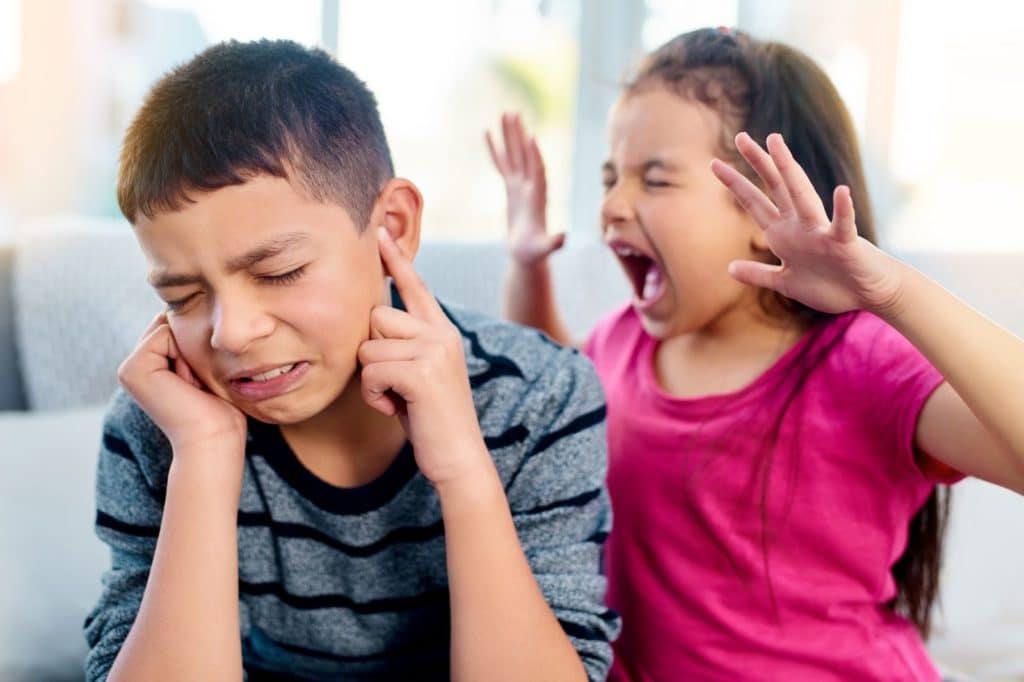Students are people, and like all humans, they can get frustrated and angry sometimes. The challenge, when it comes to effectively managing classroom behavior, is teaching students appropriate ways to process and express that anger. The problems come when they don’t, or can’t, handle anger in acceptable ways. Students who don’t handle anger well can use physical or verbal outbursts that disrupt your class. The problem may escalate to threats, injuries, damage to property and/or self-harm.
When a student often throws fits of anger, they’re not engaging in an appropriate way. They also present a distraction for other students, leading to further disruptions for your class. Other classmates may be afraid and withdraw, or retaliate, which brings more volatility to an already charged situation.
Verbal aggression, physical aggression, and destroying property all have different consequences based on severity. You can work with verbal aggression. Physical aggression or destroying property is a very serious issue, and needs immediate intervention from a team of school professionals, parents, and possibly other authorities.
Identify the cause of the aggression
When you have a student who’s making verbal threats or saying hurtful, abusive things, you need to determine what’s triggering that behavior. Do you notice the student starts becoming angry when you transition from one activity to another? Maybe when you move from math to reading, your student gets unplugged somehow. They may pelt you with verbal or personal attacks and lash out with anger.
First, be calm and neutral when seeing this behavior. Responding to the student in kind is not productive. You can’t take it personally. It may be hard to stay objective and supportive, but that’s your goal here.
Then, consider: What is it about this time or activity that creates a problem situation or leads to these aggressive behaviors? Look at the conditions that have triggered this response. Maybe this student really doesn’t like reading and needs some extra help. Maybe they’re uncomfortable with the material, and that’s why they want to create a disruption. Maybe they’re frustrated and angry at something else and don’t have the ability to channel it or communicate it productively. That can lead to more anger and frustration.
Try to isolate the conditions that bring on the problem behavior. That way, you’ll have a better understanding of when it’s most likely to happen, and identify the root cause. Then, you can make more targeted adjustments from there that speak to what is causing the student to lose control of their anger.
Consider function over form: attention or escape
When you consider the function of why a student throws fits of anger, you’re considering: What’s the payoff for them? Try not to be as concerned with the details of what they’re saying when they’re lashing out with verbal anger, so much as why they’re doing it. You need to figure out the root cause behind the behavior first before you can best determine where to go next.
For example, they might be saying hurtful things in anger to get attention. Do you find that you’re giving them undivided attention more often when they’re being disruptive? You’ve got to get them to stop the disruptive behavior so the rest of the class can continue, right? They might consider that a payoff for this problem behavior. If you give them attention every time they’re disruptive, even if that attention is negative and includes adverse consequences, you may be unwittingly reinforcing the problem behavior. The function of throwing a fit of anger, in this case, is to get more access to your dedicated attention.
If it looks like the student wants more attention, consider how you can encourage use of more appropriate behaviors to get it. You might minimize or remove all of your attention from that student until they behave the way you need them to. You might also use differential reinforcement, which is to increase your positive feedback with other students who are more appropriately working through a frustrating situation. Your challenging student isn’t receiving attention. When you increase the level or quality attention to other students, you’re sending a message that appropriate behavior is rewarded with the attention that your attention-seeking student is after.
The student might be lashing out in anger because they’re trying to escape. When they make threats or say scary things, does it earn them a trip to the hall or to the principal’s office? Do they get a ticket out of the class and get to avoid some situation they were hoping to avoid anyway? The function of throwing a fit for this student may be to avoid having to struggle with something they’d rather not deal with, and escape is their reward.
When a student is demonstrating anger with verbal abuse or threats, try to get them to communicate about what’s going on. Acknowledge that this seems like a difficult time for them, and start with where they are. Ask, “What about this time or activity is making you seem so angry?” Consider offering them a chance to ask for a break, and let them know when you’ll expect them to come back ready to participate in a more productive way.
You can also empower them with a choice. For example, let them know, “You have these two things that need to get done, and you can decide which one you need to do first.” You might also let them know it’s ok to ask for help, even write you a note, and make yourself available. Again, getting down to the core of why they’re angry will help you develop an appropriate response.
Implement behavioral interventions
These steps can help as you work through how to handle a student who often throws fits of anger.
- Stay calm. Stay neutral. Assess in the moment what seems to be driving this behavior.
- Verify your concern. Try to get your student to communicate about what’s going on. “It looks like you’re having a difficult time. What is it about this time/activity that is causing you to seem so angry?”
- Ask the student to help you understand what they need. They might not have the language to say it on their own, so be ready to offer some suggestions and teach them how to ask for help.
- Give specific examples of support. Students thrive when they feel empowered and can exercise some choice.
- Provide an alternative for that student and get everybody else set up and go back to the student having the problem.
When to get more help
If anybody’s physical safety is ever threatened in your classroom, you need to call for assistance right away. Clear the other students from the room, or see if the student will cooperate and leave the area (go into the hall, for example). If the student is engaged in threats of self-harm or harming others, then you should not address that situation alone.
Your school psychologist or counselor, behavioral specialist, principal, along with the student’s parents are all valuable partners in addressing a student who often throws fits of anger in your class. That student may be prone to angry outbursts because they have a developmental or emotional disorder that needs diagnosis or further intervention. Together, you can all start looking at the problem behavior and consider what variables you can control to create the best environment for that student to succeed.
Early intervention is key to a successful outcome, and will help you manage your classroom better in the long run. That’s why it’s important to implement behavioral interventions sooner rather than later. Address problem behaviors in your classroom soon after they begin. If you’re not seeing progress after a week or two, then it’s time to engage a team for more support.










